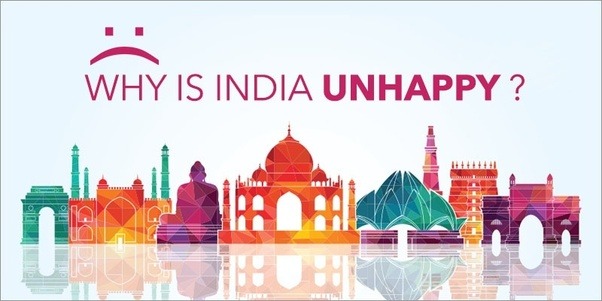The recent trend in social sciences and development studies has been to measure less tangible, more abstract indicators or human wellbeing than easily measurable ones like life expectancy, years of schooling or per capita income (that make up the Human Development Index). Measurement of happiness is gaining ground. Bhutan has been measuring Gross National Happiness for almost a decade now. Their composite index measures sustainable and equitable socio-economic development, environmental conservation, preservation and promotion of culture, and good governance.
In a limited way, governments of various countries and states have incorporated measurement of national or local happiness. With increasing emphasis on the importance of climate change, the impact of corruption, violence and mental health, and need for social networks, the focus has shifted to measuring or capturing these previously neglected indicators. The shift has also been necessitated by the fact that gains in income per capita or the national income has not always percolated to social development and failed to impact the life of the poorest of the poor.
This year’s World Happiness Report takes into account some of these key variables: GDP per capita, social support, healthy life expectancy, freedom to make life choices, generosity, and freedom from corruption. The report finds that the existence of positive emotions matters much more than the absence of negative ones.
GDP per capita is in terms of Purchasing Power Parity from World Development Indicators (WDI) by World Bank. Life expectancy at birth is from WHO and WDI data. Social support was measured through binary responses about whether or not one had relatives or friends who could be counted upon in times of need. Freedom of choice was also captured through binary responses. Generosity was measured through donations to charity in the past month. Perceptions of corruption were measured through asking about corruption in government as well as businesses. Positive affect is defined as the average of laughter and enjoyment and negative effect is average of worry, sadness and anger.
The ranking of the countries (2015-17), is perhaps the most interesting part of the report and is mostly along the expected lines apart from few surprises. The Scandinavian countries, as usual, top the list in happiness. Finland is the happiest country in the world followed closely by Norway and Denmark. This is followed by Iceland, Switzerland, and the Netherlands making Canada at number seven to be the first non-European country on the top ten list (Sweden is at number nine). Neighbours of the Southern hemisphere also fare well, with New Zealand (at eight) and Australia (at ten), making it to top ten.
The newsworthy item in India was, of course, India’s dismal position on the list. India 133 (out of 156) well below many nations with worse GDP (India has one of the highest GDP in the world) and even below many conflict-ridden zones like Palestine and Iraq. In fact, India fared worst in the entire South Asian region and was only better than Afghanistan (at 145) amongst the SAARC countries. It was a drop of 11 ranks from its previous position of 122.
India’s happiness score mostly consists of GDP per capita and good social networks. India scores lower on healthy life expectancy – a comment on our poor health systems, and freedom to make life choices. However, it is its score on generosity and perceptions of corruption that are lowest and form a miniscule part of its overall happiness score.
The report’s focus this year is on migration. With globalisation and conflicts, migration has become a vital issue. Increase in urbanisation was already leading to rise in rural-urban migration. International migration is also on the rise and has become a political issue as well. For instance, US President’s recent bans and general anti-immigration policy, the discourse around Brexit, and recent migration of people as refugees from strife-torn regions to Europe and resulting fallouts (death of Alan Kurdi a three year old Syrian boy became the symbol of the tragic plight of the refugees). The report mentions that around 10 percent or 25 million international migrants are refugees.
Findings show that in the typical country, immigrants are about as happy as people born locally. However, in the happiest countries, immigrants are significantly less happy than locals, while the reverse is true in the least happy countries. This is because the happiness of each migrant depends not only on the happiness of locals but also on the level of happiness in the migrant’s country of origin. And obviously, the happiness of immigrants also depends importantly on how accepting the locals are towards immigrants.
World Happiness Report, besides examining the quality of life and global phenomenon like immigration, are also important from the policy perspective. Most development policy is geared towards generating and measuring tangible indicators like income, schooling, or IMR and MMR. In developing country settings where poverty is rampant, school drop outs common, and infants and mothers fare poorly, such indicators are vital. However, looking at indicators such as happiness, better governance, and importance of social networks can be fundamental to long-term policy goals for the ultimate well-being of the nation and its people.
Disclaimer: The opinions expressed in this article are the personal opinions of the author. The facts and opinions appearing in the article do not reflect the views of NEWSD and NEWSD does not assume any responsibility or liability for the same.


















